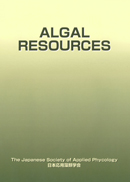8 巻, 1 号
選択された号の論文の7件中1~7を表示しています
- |<
- <
- 1
- >
- >|
-
2015 年8 巻1 号 p. 1-10
発行日: 2015年
公開日: 2020/01/15
PDF形式でダウンロード (1194K) -
2015 年8 巻1 号 p. 11-22
発行日: 2015年
公開日: 2020/01/15
PDF形式でダウンロード (1493K) -
2015 年8 巻1 号 p. 23-36
発行日: 2015年
公開日: 2020/01/15
PDF形式でダウンロード (1932K) -
2015 年8 巻1 号 p. 37-53
発行日: 2015年
公開日: 2020/01/15
PDF形式でダウンロード (4196K) -
2015 年8 巻1 号 p. 55-57
発行日: 2015年
公開日: 2020/01/15
PDF形式でダウンロード (1052K) -
2015 年8 巻1 号 p. 59-64
発行日: 2015年
公開日: 2020/01/15
PDF形式でダウンロード (1394K) -
2015 年8 巻1 号 p. 65-69
発行日: 2015年
公開日: 2020/01/15
PDF形式でダウンロード (1386K)
- |<
- <
- 1
- >
- >|
